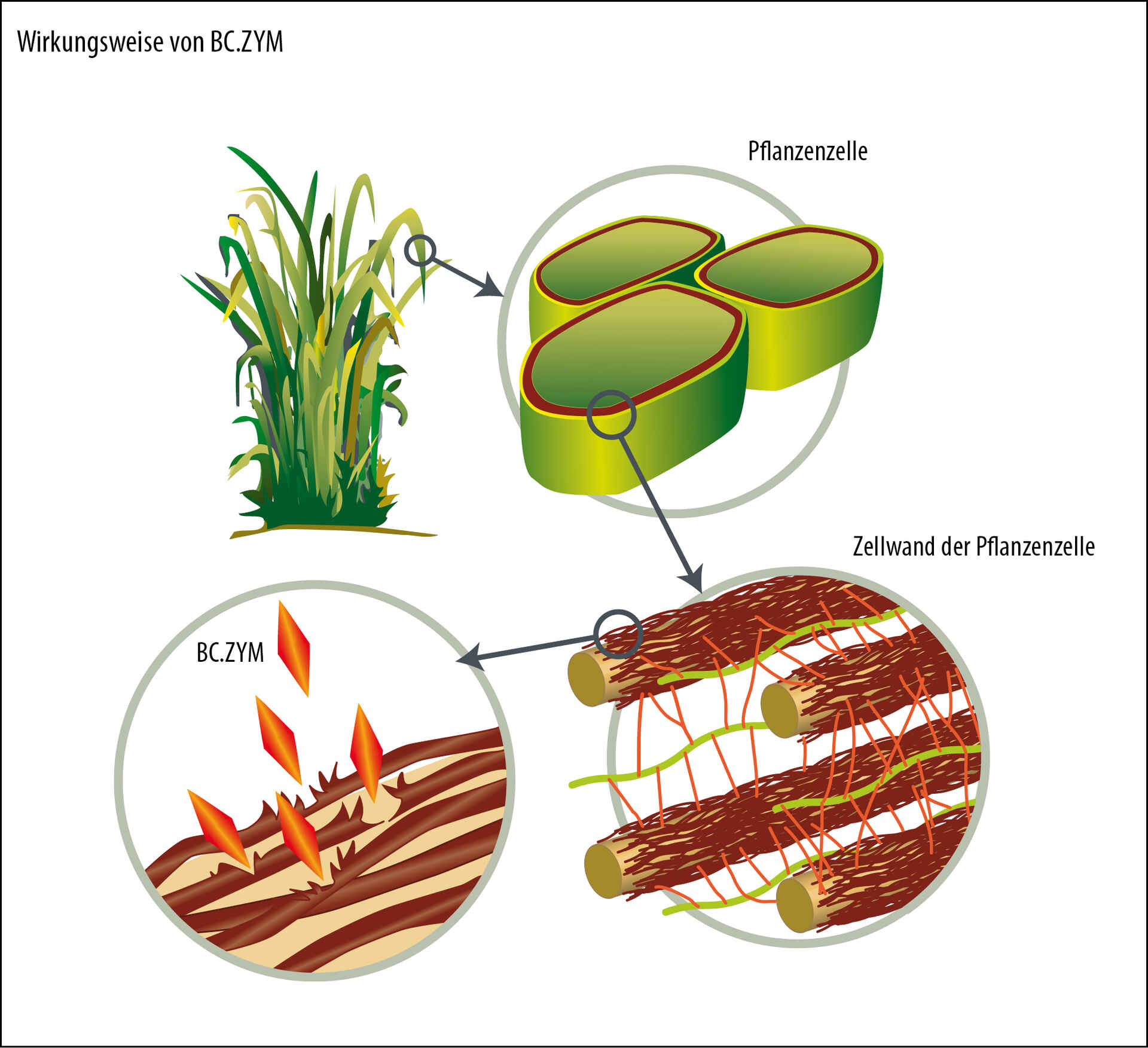Fundamentals of fermentation biology

© miglbauer/agrar-press
The production of biogas is a complex fermentation process of various microorganisms that requires a stable process environment. In practice, various factors can throw the fermenter biology out of balance and thus inhibit biogas production.
Formation of biogas - a complex process
Biogas is the product in an anaerobic decomposition process. This process can basically be divided into four phases. Each of its process stages involves different microorganisms and different enzymes that work together in close spatial proximity and form a kind of symbiosis.
Biogas is produced in four phases
In the first step, the hydrolysis phase, carbohydrates are broken down to simple sugars, proteins to amino acids and fats to fatty acids. The products of hydrolysis are degraded in the subsequent acid formation phase (acidogenesis), primarily to organic acids and lower alcohols. The acetic acid formation phase (acetogenesis) is the link to methane formation. Here, the products of acid formation are converted into acetic acid, carbon dioxide and hydrogen, which are ultimately the starting products for methane formation (methanogenesis). In a healthy process, all these steps occur synchronously (see Figure 1).
Optimal nutrient supply enables the smooth process
For all these process steps to run smoothly, stable process conditions must be established. A decisive role is played by the supply of nutrients and essential trace elements to the microorganisms involved.
In addition to their function in building up cell substance, trace elements are necessary above all as building blocks in enzymes and coenzymes, which in turn are responsible in many ways for catalyzing the individual reaction steps of the process described above. For example, in one of the degradation pathways of methane formation from CO2 and H2 alone, seven enzymes and three coenzymes are involved.
In addition to their function in building up cell substance, trace elements are necessary above all as building blocks in enzymes and coenzymes, which in turn are responsible in many ways for catalyzing the individual reaction steps of the process described above. For example, in one of the degradation pathways of methane formation from CO2 and H2 alone, seven enzymes and three coenzymes are involved.
Not too much and not too little - the ratio of nutrients is crucial
Liebig's "law of the minimum" applies to the fermentation process (see Figure 2). It states that full yields cannot be achieved if only one nutrient is deficient. However, an oversupply of minerals can also have a toxic effect on the microorganisms.
Since the boundaries between optimal supply and toxic effect are very close for some elements, exact analytics and precise dosing of trace elements are of great importance in the process of methane formation. From the point of view of soil protection, an over-concentration of micro- or macronutrients should also be avoided as a matter of principle in order to rule out unnecessary environmental pollution.
Effect of enzymes in fermentation biology

Enzymes are specific biocatalysts that accelerate biochemical reactions or make them possible in the first place.
In the first step of biogas formation - hydrolysis - the substrate ingredients (cellulose, hemicellulose, pectin, starch, proteins, lipids) are broken down by the enzymes into substances (sugars, amino acids, fatty acids) that can pass through the cell membrane. Two different enzyme groups are involved in this process.
Only then can the bacteria involved in the biogas process carry out the further stages of biogas formation.
If fiber-rich substrates are used, the methane formation process can be supported by enzymes.
Specific enzymes of different active groups support the fiber- and molecule-splitting degradation processes in the hydrolysis phase.
